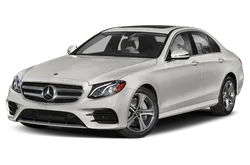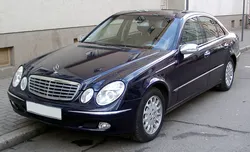

Mercedes-Benz E-Class Generation 3 W211 Facelift 2006
Explore the Mercedes-Benz E-Class Generation 3, including the W211 and S211 facelift models from 2006, perfect for discerning drivers in Portugal.
The Mercedes-Benz E-Class has long been regarded as a symbol of luxury, performance, and engineering excellence. The third generation of the E-Class, designated W211 for sedans and...
Technical Specifications
Select Version
Dimensions
Engine
Driving
Others
History and Features
Mycarro AI
Apr 27, 2025
The Mercedes-Benz E-Class has long been regarded as a symbol of luxury, performance, and engineering excellence. The third generation of the E-Class, designated W211 for sedans and S211 for station wagons, was produced from 2002 until 2009. The facelift introduced in 2006 added several enhancements that strengthened the model’s appeal in the premium sedan segment.
Introduction to the W211/S211 Facelift
The 2006 facelift revitalized the W211 and S211 models, providing a comprehensive update to both aesthetics and functionality. The exterior design changes brought sharper lines and updated headlights featuring a more aggressive look, which aligned the car with the brand's then-current design philosophy. These modifications not only enhanced visual appeal but also improved aerodynamics, contributing to better fuel efficiency and performance.
Enhanced Interior Features
Inside, the 2006 facelift focused on luxury and comfort. The cabin boasted high-quality materials, including leather and wood trim that highlighted the classic Mercedes-Benz elegance. The changes included a new instrument cluster design, an updated dashboard layout, and improved ergonomics. One of the notable upgrades was the introduction of the COMAND system, which enabled advanced multimedia connectivity and navigation functionalities.
The facelift also introduced improved sound insulation, which significantly reduced cabin noise levels, creating a quieter and more comfortable environment for passengers. Furthermore, the seats were redesigned to provide better lumbar support and ergonomics, allowing for longer journeys with enhanced comfort.
Technological Advances
The facelifted E-Class also introduced numerous technological advancements that contributed to safety and driving dynamics. Notably, the introduction of the latest iteration of the Mercedes-Benz Electronic Stability Program (ESP) helped significantly improve vehicle stability, especially in challenging driving conditions. The vehicle was equipped with a host of safety features, including advanced airbags, active head restraints, and optional lane-keeping assistance systems.
Additionally, the facelift marked the expansion of engine options, introducing newer and more efficient powertrains. The petrol engines were enhanced for improved fuel economy while maintaining or even increasing power outputs. These options allowed buyers to choose between performance-oriented models and more economical versions, addressing a broader range of customer preferences.
Performance Variants
The performance line-up for the W211 and S211 included several variants, appealing to both conservative buyers looking for reliable transportation and those searching for a sportier driving experience. The E55 AMG continued to represent the pinnacle of performance, offering a supercharged V8 engine that delivered impressive acceleration and responsiveness. Concurrently, more economical models such as the E320 CDI diesel were well-received, boasting exceptional fuel efficiency while not compromising on comfort and luxury.
The introduction of 4MATIC all-wheel drive on selected models was another noteworthy feature that enhanced traction and handling in various driving situations. This technology allowed the E-Class to remain competitive against rival luxury sedans, especially in regions prone to harsh weather conditions.
Market Reception and Legacy
Upon its release, the 2006 facelift of the W211 and S211 models received positive reviews from both critics and consumers. The combination of enhanced technology, elegant design, and Mercedes-Benz’s commitment to safety helped solidify the E-Class's position as a leader in the luxury sedan market. Enthusiasts praised its balanced driving dynamics, comfort, and high-quality finishes within the cabin.
The legacy of the W211 generation technically continued even after its production ended in 2009, influencing future Mercedes-Benz models with its design elements and technology. Even today, many of the design cues and technologies first introduced in this generation remain prevalent in the current E-Class lineup.
Conclusion
The Mercedes-Benz E-Class Generation 3 Facelift (W211, S211) from 2006 represents a significant chapter in the lineage of one of the luxury automotive industry's most revered models. With a blend of advanced technology, performance options, and timeless luxury, the facelifted version ensured the E-Class remained a favorite among discerning drivers, setting the standard for what a luxury sedan should embody.
